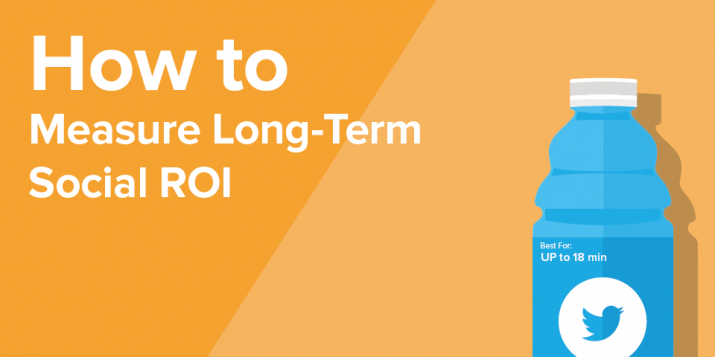
From engagement to ROI: How to measure employee advocacy success
Table of contents
When choosing restaurant recommendations, it goes without saying that most of us prefer the expertise of our foodie friend over ads by Chili’s, Pizza Hut, or McDonald’s. Employee advocacy operates on a similar principle.
Since 84% of consumers trust endorsements from friends and family over traditional advertising, Employee advocacy has become an increasingly popular tactic for fostering authentic relationships with a broader audience and infusing a human touch into your brand by leveraging the influence and expertise of your employees.
Despite advocacy programs’ growing prominence, gauging their effectiveness and showcasing tangible business value from them presents challenges. This blog post will delve into some metrics you should measure to demonstrate the business impact of employee advocacy.
Measuring employee advocacy impact
Let’s start with a bit of a disclaimer. Every organization embarking on an advocacy program should recognize the importance of metrics. However, these metrics may differ based on your organization’s unique business goals. For some, engagement metrics such as likes, shares, and comments might be paramount, reflecting a focus on building brand awareness and community engagement.
Others may prioritize lead generation metrics, aiming to convert advocacy efforts into tangible business opportunities. Ultimately, aligning advocacy metrics with overall business goals ensures that the program’s impact is measured and contributes directly to your organization’s broader strategic objectives, fostering a more meaningful and impactful advocacy strategy.
Here are some commonly used metrics to help you get started.
Best metrics for ROI
Conversion rates
Measuring conversion rates for employee advocacy posts is essential as it provides a tangible metric to assess the effectiveness of your advocate’s efforts in driving desired actions from the audience. When employees share content that leads to conversions, it signifies a direct impact on the company’s bottom line. High conversion rates indicate that the advocacy program is increasing brand visibility and compelling the audience to take meaningful actions, such as filling out a demo form, signing up for a newsletter, or engaging with the brand in other valuable ways.
Furthermore, understanding conversion rates helps in refining content strategies. Analyzing which types of employee advocacy content lead to the highest conversion rates provides valuable insights into what resonates most with the audience. This information allows organizations to optimize their advocacy programs, focusing on content that attracts attention and drives the desired actions, thereby maximizing the ROI for employee advocacy initiatives.
Taking this a step further, you can also measure your post-to-conversion ratio. This enables you to evaluate the number of posts clicked and the number of clicks that resulted in a conversion.
Lead generation
Lead generation is vital for employee advocacy as it directly correlates employees’ advocacy efforts with potential business opportunities. Employees sharing company content and endorsing products or services expand the audience’s reach. Leads generated through employee advocacy often have higher conversion rates, demonstrating the strategy’s effectiveness in growing revenue and highlighting employees’ influential role in forming meaningful connections with potential customers.
Lead generation from employee advocacy is a metric that you can easily track and tie directly to dollars. Monitor the impact on lead generation by attributing leads to specific employee shares. CRM tools can then be used to track the source of leads and determine how many originate from employee advocacy efforts.
Influenced opportunities
Oktopost takes your ability to track and measure ROI from employee advocacy one step further with the help of Influenced Opportunity Reports. This feature enables you to track how social content shared by employees directly influences sales opportunities. By having a clear view of the impact of employee advocacy on the sales pipeline, you can quantify the revenue generated from these efforts.
This substantiates the value of your employee advocacy program and allows for informed decisions on optimizing content strategies based on what resonates most with your audience during different stages of the sales process. The Influenced Opportunity Reports become vital in demonstrating the tangible business outcomes driven by employee advocacy. They offer a comprehensive view of their contribution to the overall marketing and sales objectives.
Recommended for further reading
Best metrics for brand awareness
Reach and engagement
Measuring reach and engagement of employee advocacy posts is crucial for gauging the program’s effectiveness. Reach quantifies the extent of the audience exposed to the content, reflecting the potential impact on brand visibility. Meanwhile, engagement metrics, such as likes, shares, and comments, provide insights into the audience’s level of interaction and interest. The combined analysis of reach and engagement offers a comprehensive view of how well employee advocacy resonates with the target audience. High reach coupled with meaningful engagement indicates expanded brand exposure and the creation of authentic connections, essential for building trust and credibility.
However, as helpful as engagements are, they are only part of the story. For example, if you get a lot of engagement in the form of negative comments, your content clearly isn’t resonating with your audience as expected. Likewise, if you’re getting engagement from individuals who are not part of your target audience, it may be time to re-evaluate your content strategy so it better aligns with the people you want to reach.
Content performance
Not all content will drive a positive response from your advocates’ audiences. Therefore, measuring your advocacy posts’ performance at the content level is important. You can do this by identifying which types of advocacy content resonate most with your audience and contribute to driving website traffic or conversions.
If you use Oktopost, you can take this analysis a step further by measuring the following:
Message performance: Analyze the captions that resonate the most with your advocates’ audiences. Understanding the messaging that performs well can inform your overall content strategy and help refine communication to align with audience preferences.
Performance breakdown: Evaluate the effectiveness of advocacy posts by categorizing them through tags or topics to gain insights into how particular content themes or types resonate with your advocates’ audiences. This analysis lets you observe engagement metrics, click-through rates, link clicks, likes, comments, and more, segmented by topic or tag. Identifying content that elicits the most positive responses provides valuable insights for consideration in future posts.
Employee participation
Your employee advocacy program’s success relies significantly on your advocates’ active involvement. Their participation is pivotal in achieving the program’s goals. Therefore, assessing the degree of employee engagement and participation in advocacy initiatives is essential. A heightened participation rate signifies a stronger organizational advocacy culture, reflecting your employees’ enthusiasm for getting involved.
In Oktopost, you can measure:
Top advocates: Identify your top advocates and quantify their engagement achievements. Recognizing and rewarding your top advocates can further motivate and strengthen your advocacy program.
Advocate edit ratio: Assess the percentage of captions that your advocates are editing. Unique and authentic content performs better, so a higher edit ratio indicates a more effective advocacy strategy.
Proving the bottom line
While the metrics above provide valuable insights, tying employee advocacy directly to revenue requires a comprehensive approach. Consider employing the following strategies:
Attribution modeling: Implement advanced attribution models to understand employee advocacy’s role in the customer journey. Multi-touch attribution models can help distribute credit to various touchpoints, including advocacy efforts.
Benchmarking: Compare the performance of employee advocacy against other marketing channels. Establish benchmarks and analyze the cost-effectiveness of advocacy programs compared to traditional advertising or influencer marketing. For example, in Oktopost, you can directly compare your advocacy performance against your corporate social media performance.
Long-term analysis: Recognize that the impact of employee advocacy may extend beyond short-term gains. Conduct long-term analyses to identify trends and patterns in customer acquisition, retention, and overall brand growth.
Uncover the business impact of your advocacy program
Measuring the impact of your advocacy program is crucial for understanding its effectiveness in achieving business goals, enhancing brand visibility, and fostering genuine connections with your audience. Oktopost provides comprehensive tools to facilitate this assessment, allowing you to gauge employee engagement, track the performance of advocacy posts, and analyze data that directly correlates to your business objectives. By leveraging Oktopost’s capabilities, you gain actionable insights into the success of your advocacy initiatives, enabling informed decision-making and the refinement of strategies to maximize the program’s positive impact on your organization. Contact our experts to learn more.




